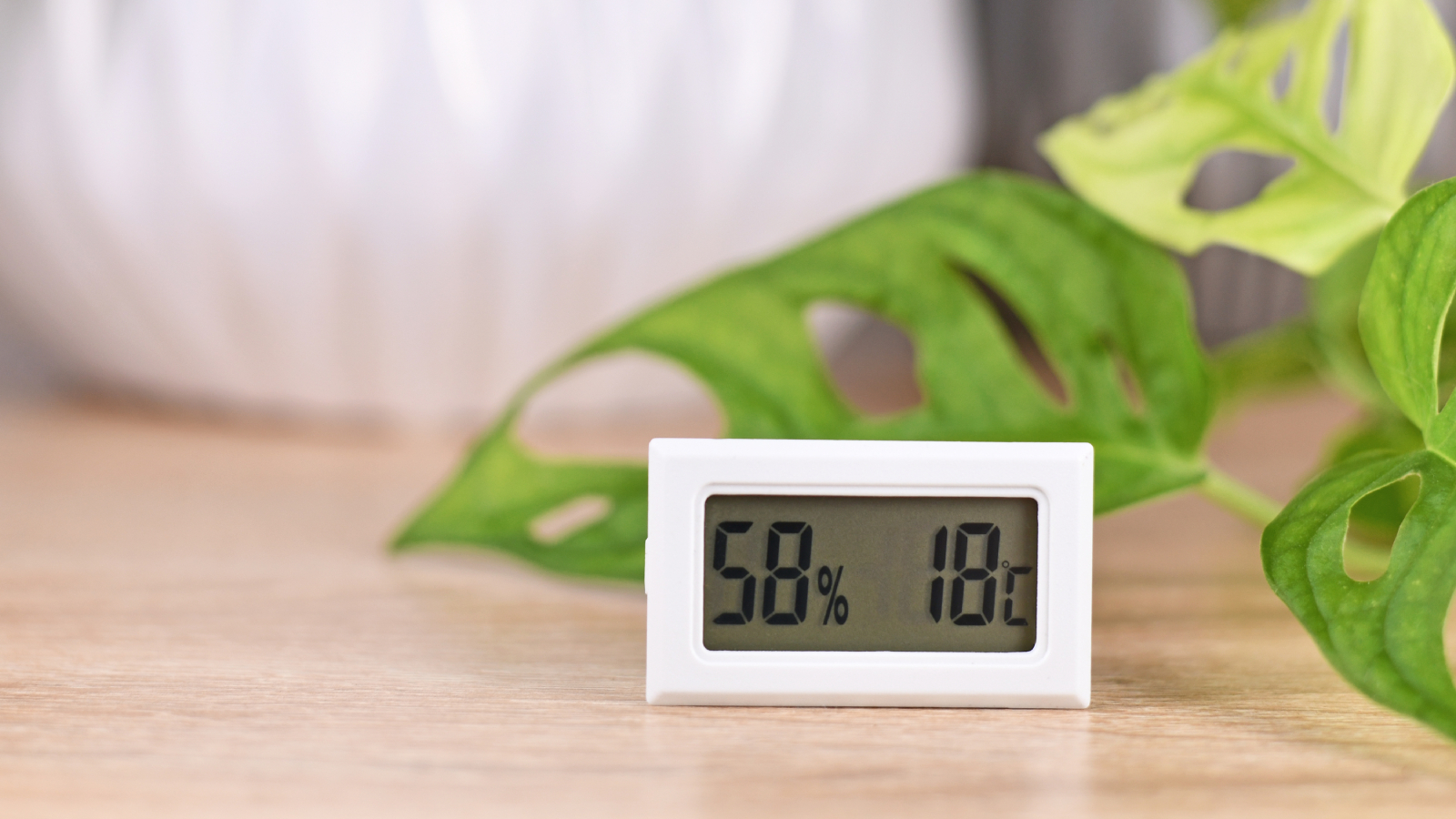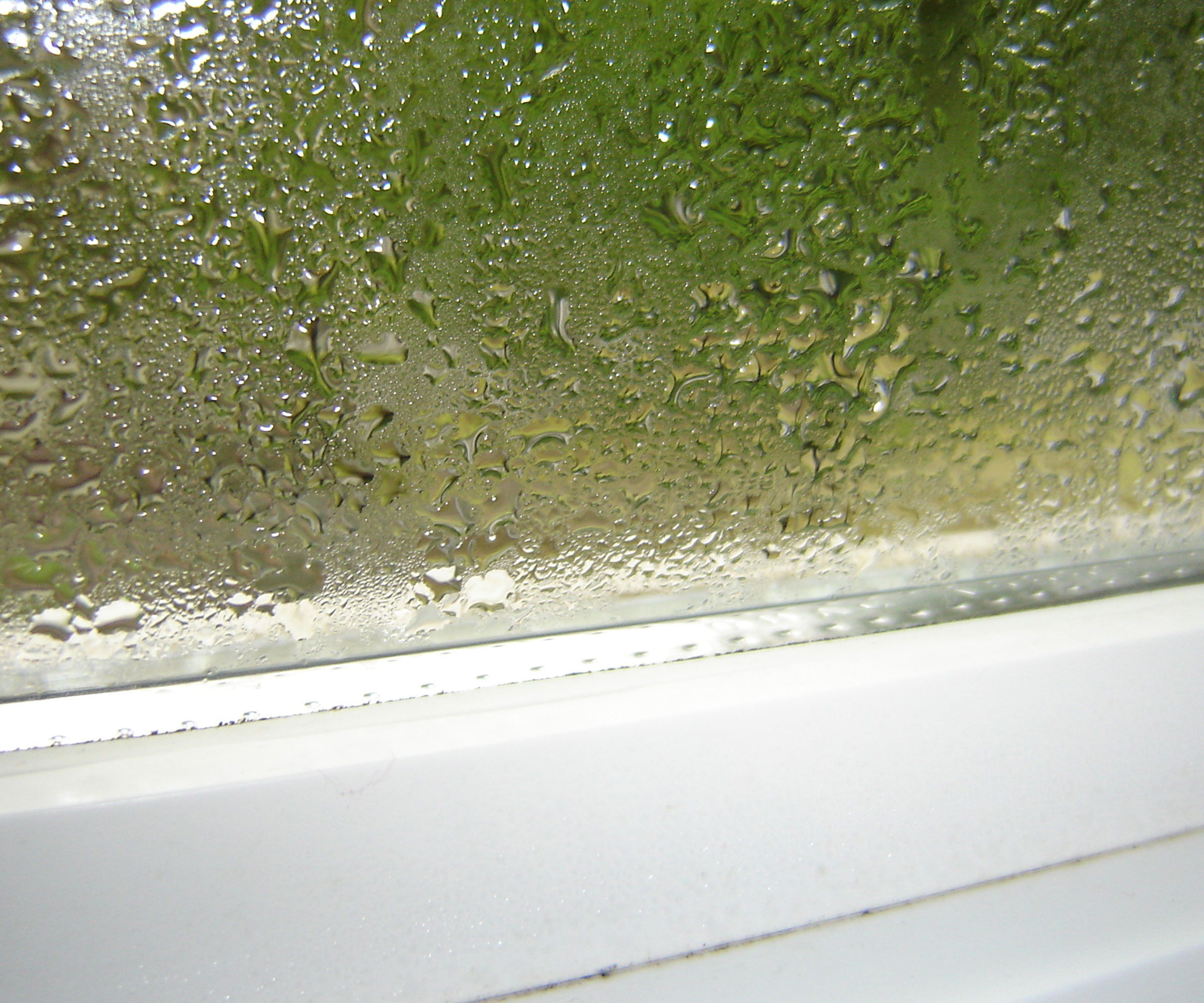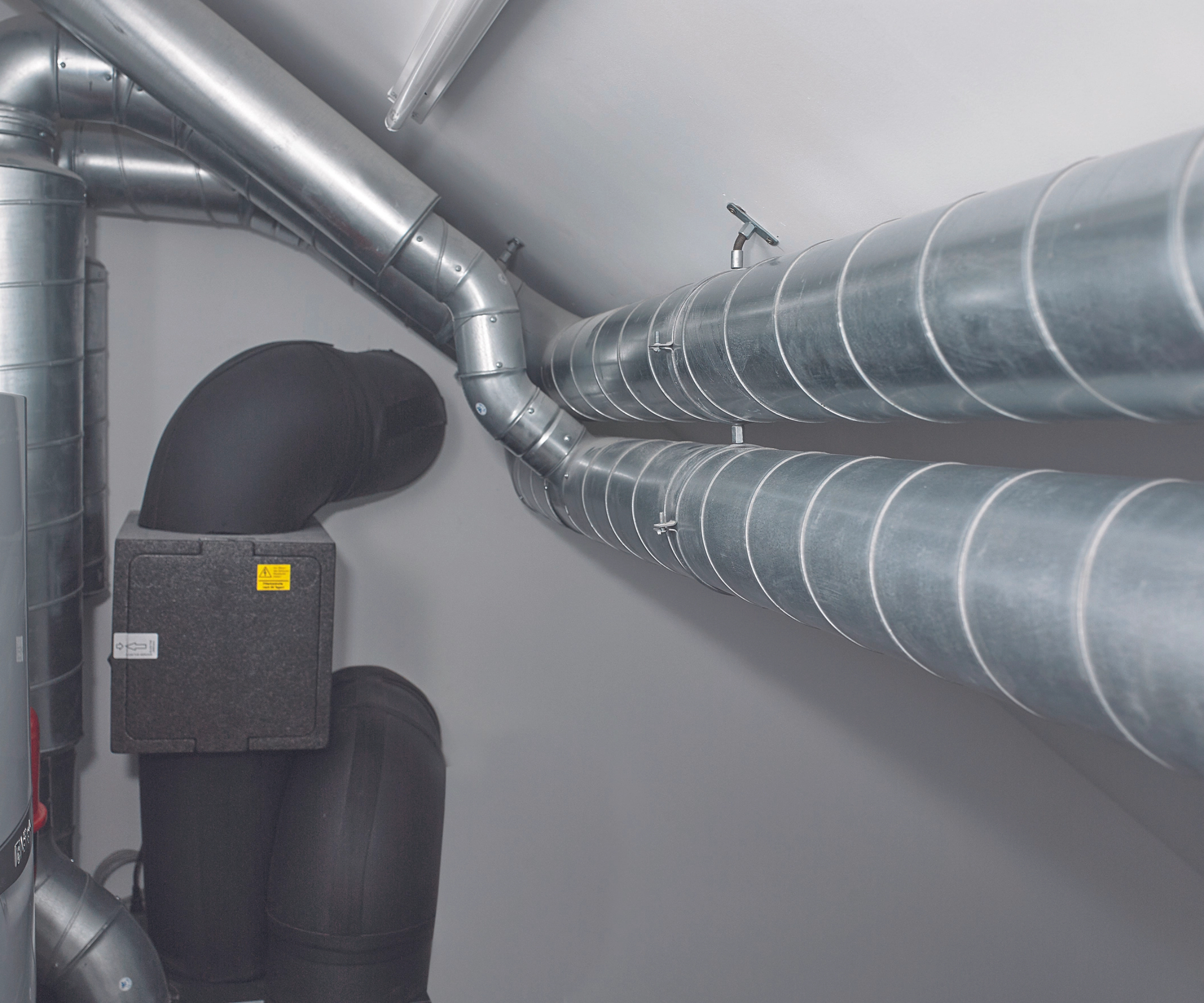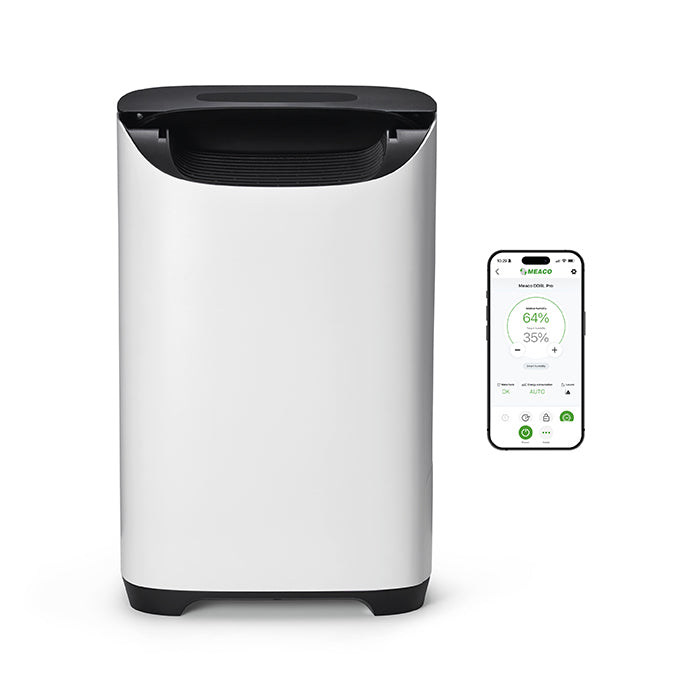Need to know how to reduce humidity in a house? These are the steps you can take starting from today
Reducing humidity is the key to avoiding longer term problems with mould and damp. We share the top expert recommended ways for tackling the issue

If you're wondering how to reduce humidity in a house, you're not alone – particularly if you're reading this during autumn or winter. As the temperature drops outside, so the level of condensation, mould and damp can start to rise inside your home.
With the right home ventilation methods in place, managing humidity is possible, but what are the best ways to reduce humidity in your house?
We explore the natural and mechanical options available to you so you can help keep humidity at bay, and your home and its inhabitants free from problems.
Causes of humidity
In order to understand how to reduce humidity in a house, it's important to start with the root causes for an increase in humidity levels.
The air in any house comes from the outside, but if the temperature is colder in the home, the humidity increases, creating levels that can easily reach above 90% RH [relative humidity]. This is far higher than the recommended level of humidity in a house which is around 55% RH.
Then, everyday activities such as cooking and showering, and even breathing all add more moisture to the air. If there's nowhere for it to escape, humidity levels continue to rise. One simple sign the humidity is high in your home? Condensation on windows as well as other areas too.
"When temperatures drop the air can no longer hold as much moisture," explains Larry Soper, technical services manager at EnviroVent. "This mean it will migrate to the coldest parts of the house where it condenses on windows and walls."
Bring your dream home to life with expert advice, how to guides and design inspiration. Sign up for our newsletter and get two free tickets to a Homebuilding & Renovating Show near you.
If humidity is high in a house it can lead to all kinds of unpleasant problems, so it's best to find out how to stop condensation, damp, or mould as soon as you spot them. "In most cases, damp and mould originates from condensation forming," says Larry, meaning knowing how to reduce the humidity that causes condensation is vital.
"Over time problems such as mould growth, condensation and musty smells will become apparent, causing damage to wallpaper, carpets, furniture and windowsills," adds Chris Michael, co-founder and managing director at Meaco. "If there is damp and mould in the home it's likely to contribute towards respiratory problems, respiratory infections, allergies or asthma.
"Damp and mould can also affect the immune system, especially for the young and old," he adds.
Add to this people switching from using a tumble drier to air drying washing indoors, and the problem compounds further. Then, thrown in the natural reaction to the cost of living crisis, which is seeing people in their droves saying they won't be switching the heating on and it's no wonder humidity is on the rise.
But, solutions to rising energy costs are not always the most sensible option, warns Chris.
"The big kicker is, that with extra moisture content in the air; it will actually make the home harder and more expensive to heat when the heating does go on – an ironic and unwelcome twist."


Larry heads up Envirovent's Technical Support Team as well providing internal and external training on ventilation, regulations and specification, including managing Envirovent's NICEIC approved assessment centre.

Chris has been advising on humidity solutions and dehumidifiers since 1991 and is well known within the dehumidifier industry across the world as a lead on innovation and sustainability.
How to reduce humidity
There are a number of ways to reduce humidity in a house, some of which are simple lifestyle techniques that won't cost you a penny.
Natural ventilation is always important in your home, and employing the technique of house burping each day can help balance air levels.
Others involve purchasing appliances such as dehumidifiers to help reduce moisture levels, and making sure your kitchen ventilation and bathroom ventilation are the best they can be .
In some cases, more permanent solutions such as installing a mechanical heat recovery ventilation (MVHR) system may be an option too.
It's tricky to bid farewell to high humidity in an existing house completely without taking on some home improvement. Repair any leaks you find and install powerful extractor fans in the kitchen and bathrooms as a first step.
"The right ventilation unit in a property would either extract moisture at source or dilute, displace and replace moisture-laden air, using fresh filtered air from the outside," explains Larry Soper.
"This would control the humidity levels, so that condensation, mould and other indoor contaminants are significantly reduced. This ranges from single room ventilation units to whole house systems, such as PIV (Positive Input Ventilation) and MVHR."

However, if a permanent solution isn't an option, when it comes to measures you can take yourself, Chris Michael suggests the following:
- Reduce moisture vapour from household activity: Many everyday tasks create moisture, often without us noticing. By putting lids on saucepans when boiling or steaming vegetables and using a bathroom extractor fan or opening a window when using the bath or shower, homeowners can reduce moisture vapour in the air.
- Make air drying indoors efficient: If you can't dry your clothes outdoors, before you take them out of the washing machine use a spin cycle to reduce the amount of water left in the clothes to a minimum. Place a drying rack away from walls to prevent the moisture from being trapped. Hang items individually and with as much space in between them as possible so they will dry more quickly. Open windows to enable airflow.
- Warm up your house without central heating: Making the most of any natural sunlight can help to warm houses and dry out any damp air. Opening curtains and blinds in the day prevents moisture from being trapped around the windows, and using rugs and mats on wooden and stone floors can make rooms feel warmer too. If you haven’t already, consider investing in double glazing costs, as it helps your property retain the heat from the sun during the day.
- Make simple changes inside and outside the home: Encouraging air flow and removing opportunities for damp to spread reduces damage or removes opportunities for mould to form. To reduce mould in bedrooms, open doors of built-in wardrobes that sit on outside walls and trying to keep furniture, clothes and shoes from touching outside walls. Keeping gutters clear also decreases the amount of water that may spill down external walls, which could contribute to moisture inside the home.

Using dehumidifiers to reduce humidity
Dehumidifiers are one of the most obvious choices for those suffering from high humidity in a house.
"Choosing to buy a dehumidifier to help remove moisture from the air is a great way to improve conditions in your home," confirms Chris Michael.
"We recommend placing the dehumidifier close to the source of moisture in an area where there is good air circulation. For example, in a hallway near the bathroom and bedrooms. Or if drying wet laundry with a dehumidifier, next to where you hang the items."
And, if you do have issues with humidity, it's worth buying a model that can tell you what the current levels are, says Chris.
"A dehumidifier with an in-built humidistat, will measure the relative humidity in the property, and if you set the target humidity to 55%RH, the dehumidifier will immediately start working hard towards reducing the humidity.
"When it reaches the target it will turn itself off, only switching on again if it detects an increase, helping to save energy. You should notice a marked difference – dry air instead of wet air, a warmer home because the dehumidifier removes moisture, and a better, healthier environment."
Products with a sleep timer are also a good investment, to help reduce dehumidifier running costs. But if damp has already formed, make sure you also look into the right right way to treat damp in your home.
Dehumidifiers to help reduce humidity

A two in one dehumidifier and air purifier that also operates at a low volume

Perfect for using in colder homes or spaces such as garages or basements

A smart dehumidifier with digital display and app functionality
FAQs
How can I check the humidity in my home?
If you have signs of humidity, you might want to keep a regular eye on the levels, or even check if the changes you are making are helping to reduce humidity. It is possible to do this yourself, by investing in a thermo-hygrometee like this ThermoPro TP50 model from Amazon, which will show you the humidity levels and temperature in a room.
Does opening windows reduce humidity?
Opening windows is a good way to reduce humidity in a room and while it is not the most effective method, the window only needs to be open a small amount to make a difference.
Prioritise windows on the side of the house which suffers most of high humidity levels, such as the kitchen and bathroom.
One final suggestion on how to reduce humidity in a house? "A relatively cost-effective method is to think about making use of plants. Potted or hanging plants can make a big impact, and can really help in keeping humidity down and taking the edge off," says Gian-Carlo Grossi, managing director at Roofing Megastore.
However, some house plants are better than others at reducing humidity, so check out these suggestions for plants that can help absorb moisture in a bathroom.
Make sure you also check your loft for the tell tale signs of condensation too, so that you ensure you've tackled humidity everywhere in your home.
Amy is an interiors and renovation journalist. She is the former Assistant Editor of Homebuilding & Renovating, where she worked between 2018 and 2023. She has also been an editor for Independent Advisor, where she looked after homes content, including topics such as solar panels.
She has an interest in sustainable building methods and always has her eye on the latest design ideas. Amy has also interviewed countless self builders, renovators and extenders about their experiences.
She has renovated a mid-century home, together with her partner, on a DIY basis, undertaking tasks from fitting a kitchen to laying flooring. She is currently embarking on an energy-efficient overhaul of a 1800s cottage in Somerset.

